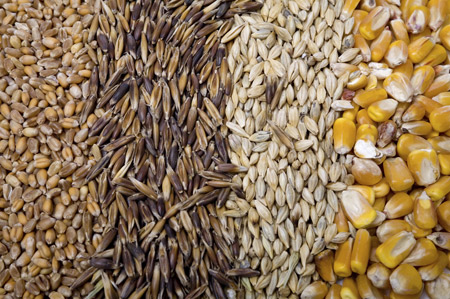Winter wheat crop in trouble
Category: Grains
 (Southwest Farm Press) – With very dry conditions setting in, most winter wheat stands are already severely stressed.
(Southwest Farm Press) – With very dry conditions setting in, most winter wheat stands are already severely stressed.
“We had one of the driest Octobers on record in Texas, and essentially no rain at all in November,” said Dr. Travis Miller, Texas A&M AgriLife Extension Service program leader and Texas A&M University soil and crop sciences associate department head. “Most stands are still hanging on, but they can only do that for a little while with the amount of rainfall we got.”
Over the last week of September, much of the state was fortunate to get enough rain to plant winter wheat and get it emerged, but with the exceptionally dry October and November, growth has been limited and stands are at risk.
Most Texas wheat was planted late-September through mid-November, with about 6 million acres planted, according to Miller. Typically, 55 percent to 60 percent of the crop is grazed, and the remainder is just planted for grain. But a lot of the wheat was planted on about 1 inch of rain in the topsoil, with no deep soil moisture because of the 2011 and 2012 drought.
For a number of reasons, the loss of wheat stands would create substantial hardships for producers, he said. One, hay barns were emptied during the 2011 drought, and many cow/calf and stocker producers need winter wheat for grazing to carry livestock through the winter.
Another frustration is that 2011 was economically devastating for many producers, and historically high wheat grain prices promised some great returns on investment. And wheat futures are likely to get even higher, as Oklahoma and western Kansas wheat growing conditions are not good.
As for grazing, if producers haven’t already gotten good growth for early grazing, they’re not likely to, Miller said.
“The reason we get good growth on fall-planted small grains is warmer temperatures and longer days, and as we get into cooler temperatures and shorter days, growth drops off,” he said. “October is usually a great month for small grain growth.”
But the story of wheat grown for grain is far from over, according to Miller.
“We can still make a decent wheat crop—don’t be mistaken about that,” he said. “If we can just keep the stands alive through the winter, and if we get some snowfall or rainfall in the spring, then it can come around.”
More information on the current Texas drought and wildfire alerts can be found on the AgriLife Extension Agricultural Drought Task Force website at http://agrilife.tamu.edu/drought/ .




